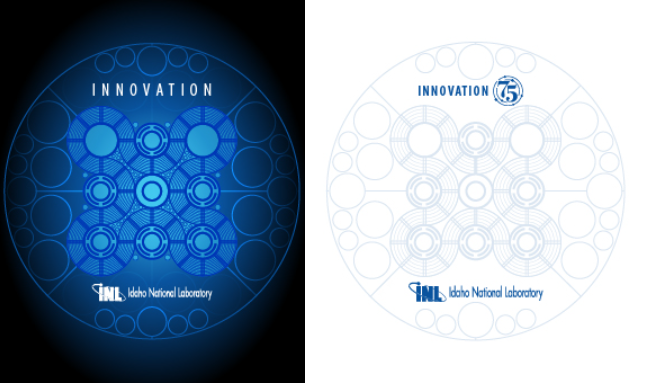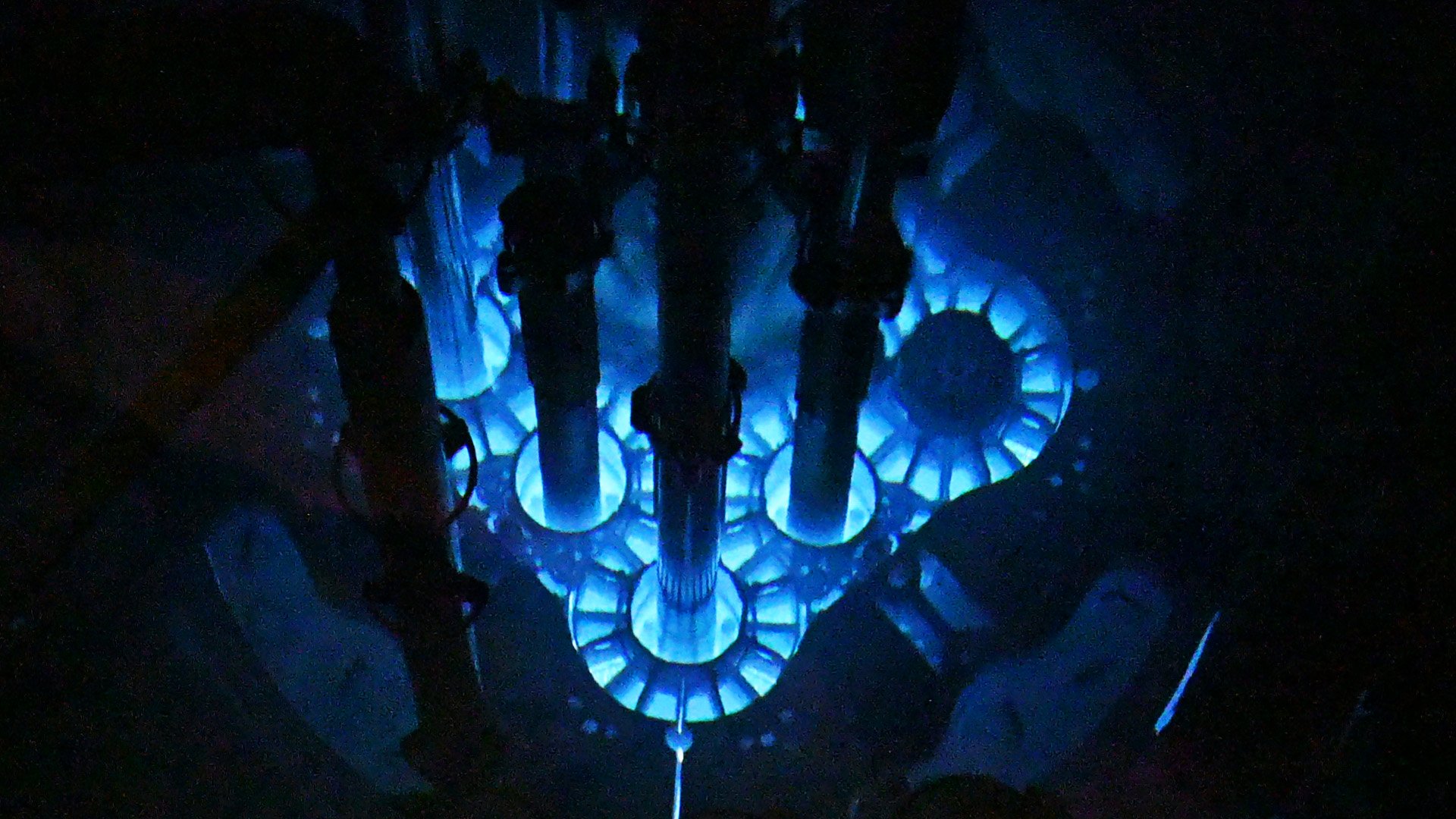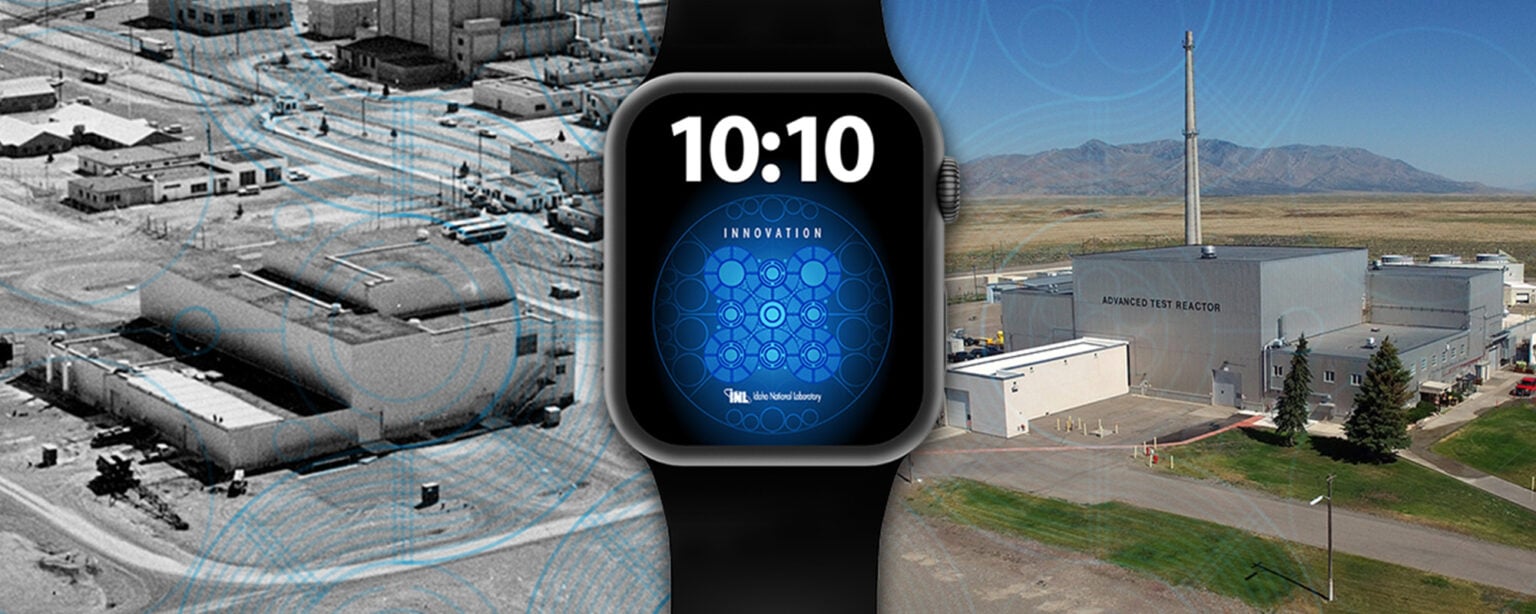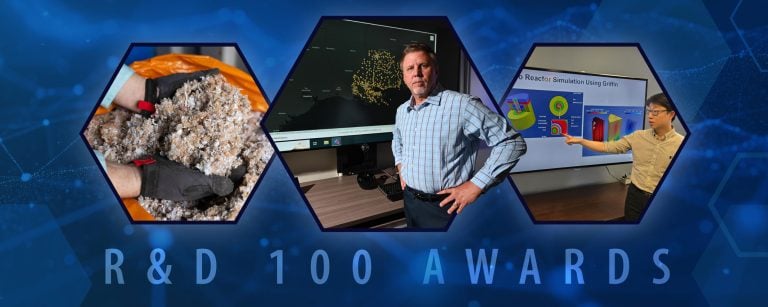Idaho National Laboratory’s (INL) Advanced Test Reactor (ATR) stands as a lasting monument to an innovative idea born on a twilight ride home across the Snake River Plain.
The word “cloverleaf” best describes ATR’s innovative core design. Early nuclear engineers built ATR to improve fuel performance in the U.S. Navy’s nuclear fleet. Fifty-seven years later, the test reactor has never been more in demand. INL and the Department of Energy have planned experiments in ATR through 2040.
To commemorate INL’s 75 years of innovation, the lab released custom smart watch faces of the ATR cloverleaf for anyone to download for their Apple iWatch or Samsung Galaxy.
Click here to choose a design for your watch.

Unmatched elegance and symmetry
The elegance and symmetry of ATR’s design give it unmatched capabilities. It was the third of three test reactors built in the first 20 years of INL, then known as the National Reactor Testing Station. The Materials Testing Reactor and the Engineering Test Reactor, both of which went into service in the 1950s, helped researchers understand and refine nuclear fuels and materials. By the end of the decade, however, the Navy asked for a reactor that could test many more of its fuel components faster.
The Navy and the Atomic Energy Commission invited several companies to propose a new test reactor. When it got nothing but traditional solutions, it turned to the testing station’s contractor at the time, Phillips Petroleum, to ask if anyone in-house had any innovative ideas. Among the engineers and managers was Deslonde de Boisblanc, a New Orleans native who had come with Phillips from Bartlesville, Oklahoma. Although he had no doctorate, de Boisblanc understood how neutrons behaved. He accepted a challenge to design a reactor that could simultaneously perform as many different experiments as possible at various levels of neutron flux. Nothing like it had been attempted.
Innovation inspiration
Inspiration came one afternoon while de Boisblanc was driving home from the test reactor area. Eyes on the sagebrush and lava outcroppings, he floated ideas and observations to his passenger, Byron Leonard, a consultant for International Nuclear.
“I thought of breeder reactors, where the effort is to minimize the leakage of neutrons,” he later wrote. “I started to think how we might make the neutrons leak in the direction of the sample, where we wanted to maximize the number of neutrons absorbed.”
If water could be placed between ATR’s fuel and the samples, he surmised, the fast neutrons leaking into the water would collide with hydrogen atoms, slowing them down so they would pile up and create a slow-neutron flux. With his finger, de Boisblanc traced in the dust on the car’s dashboard four circles representing flux traps — experiment positions surrounded by fuel — that could accommodate test loops, with a fuel line snaking completely or partially around each one. The cloverleaf pattern allowed for another flux trap at the center, and the men agreed that beryllium reflectors could give them four flux traps, and four more potential loop locations.

“Byron was so excited he volunteered to lay out the configuration,” de Boisblanc wrote. “His plan view showed that the entire serpentine fuel arrangement could be produced with only one type of fuel element.”
ATR’s current design includes 77 total test locations, including nine large flux traps — six of which have the very valuable test loops – with more on the way.
Vetting the concept with the Atomic Energy Commission and the Navy, the men were confident the new reactor core could be arranged into multiple flux-tap regions with power levels controlled by 16 beryllium-hafnium cylinders, each rotating on a vertical axis.
ATR is a tool for nuclear researchers around the world to test their innovative ideas about more resilient and longer lasting fuels and materials.
“When it went into service, the 250-megawatt ATR was the most powerful and innovative test reactor in the world, and it remains so today,” said Sean O’Kelly, associate lab director for INL’s Advanced Test Reactor Complex. “The ATR team is proud of its vitally important missions, continuing to help the Navy, DOE and industry develop the new fuels and reactor technologies that enable our national security and a clean energy future.”
INL innovation
Innovation is in INL’s DNA and is at the heart of the lab’s mission to discover, demonstrate and secure innovative nuclear energy solutions, other clean energy options and critical infrastructure.
INL is a leader in nuclear energy development and research, engaging some of the world’s brightest minds to make significant contributions to advanced reactor design and nuclear fuel technologies to make nuclear power safer and more efficient. The lab is improving cybersecurity, particularly in protecting the United States’ critical energy infrastructure, as it creates methodologies and technologies to detect, thwart and analyze cyber threats.
In addition, INL is involved in developing multiple integrated energy solutions, including contributions to hydrogen production, battery research and other energy storage solutions.
“Innovation has enabled INL to do extraordinary things for the last 75 years. It gives us the ability to challenge the status quo, imagine novel solutions and drive meaningful progress in an ever-evolving world,” INL Deputy Laboratory Director for Science and Technology and Chief Research Officer Todd Combs said. “This has been key to promoting the nation’s energy resilience, economic prosperity and security while advancing scientific knowledge and technological prowess.”





